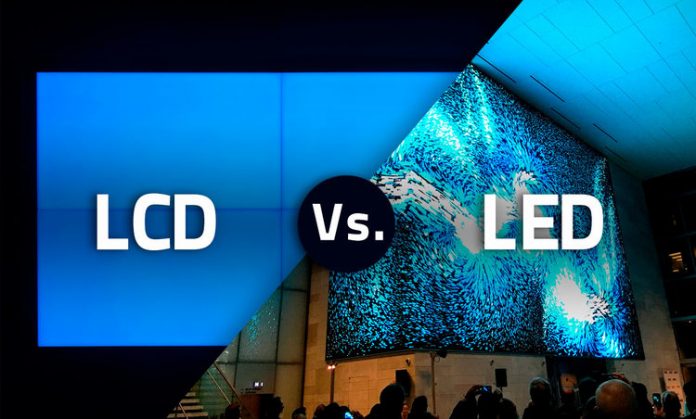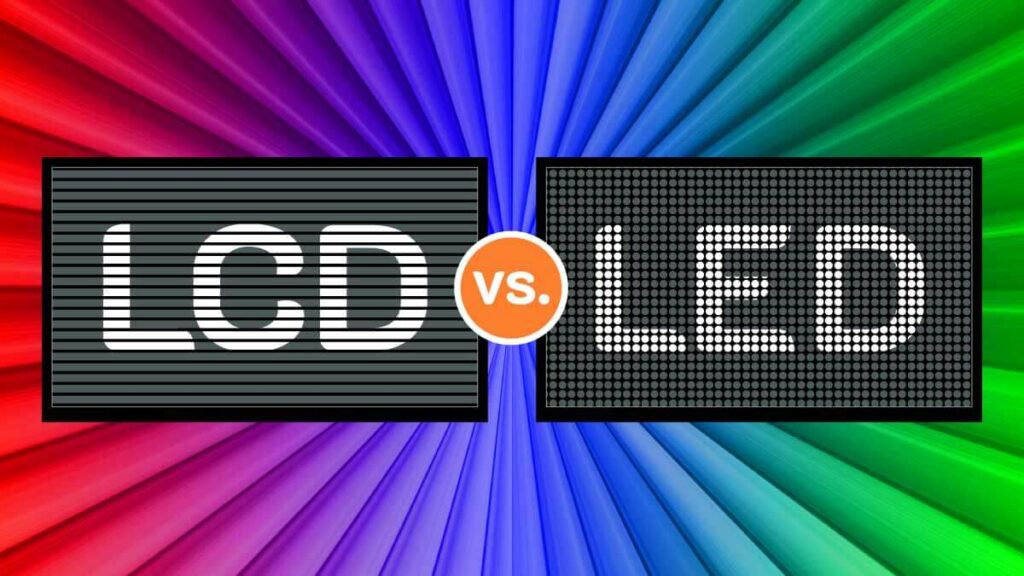When choosing a display, whether for digital signage, televisions, or commercial applications, the debate between LCD (Liquid Crystal Display) and LED (Light Emitting Diode) screens remains relevant. Both technologies offer unique advantages, but which one is the best fit for your needs?

In this guide, we’ll break down the key differences, advantages, and best use cases of LCD vs. LED displays to help you make an informed decision.
1. What is LCD and LED?
LCD (Liquid Crystal Display) is a display technology that uses liquid crystals sandwiched between two glass panels. These crystals do not emit light themselves but rely on an external backlight, typically CCFL (Cold Cathode Fluorescent Lamps), to illuminate the screen.
LED, the full name of which is Light Emitting Diode, is actually a type of LCD, except that the backlight source is replaced by LED lamps instead of CCFL, which has higher brightness, better contrast, and is more energy-efficient!
More advanced LED displays (such as MicroLED and OLED) can even emit light directly, without the need for a backlight, and the picture quality is even more amazing!
LCD vs LED: Key Differences

| Feature | LCD | LED |
|---|---|---|
| Backlighting | CCFL (Fluorescent lamps) | Light-emitting diodes (LEDs) |
| Brightness | Moderate | Higher brightness, better for outdoor use |
| Energy Efficiency | Higher power consumption | More energy-efficient |
| Lifespan | 30,000 – 50,000 hours | 50,000 – 100,000 hours |
| Contrast & Colors | Lower contrast, washed-out blacks | Higher contrast, deeper blacks |
| Thickness & Weight | Bulkier due to CCFL backlights | Slimmer and lightweight |
| Viewing Angles | Narrower angles | Wider viewing angles |
| Cost | More affordable | Slightly higher initial cost but energy-efficient in the long run |
Advantages of LED
1)Better Brightness & Visibility
LED displays provide higher brightness levels, making them ideal for outdoor digital signage, billboards, and storefront advertising. LCDs struggle in high ambient light conditions, often appearing dim.
2)Lower Power Consumption & Eco-Friendly
LEDs consume 40-60% less power than LCDs with CCFL backlights. This makes LED displays a more sustainable and cost-effective choice over time.
3) Longer Lifespan & Durability
With a lifespan of 50,000-100,000 hours, LED screens last significantly longer than LCDs, making them a better investment for businesses and digital signage applications.
4) Thinner & Lightweight Design
Because LED technology eliminates the need for bulky CCFL tubes, LED displays are much thinner, lighter, and more flexible in design, allowing for curved, foldable, and transparent LED screens.
5) Higher Contrast & Better Image Quality
LED screens offer deeper blacks, richer colors, and better contrast ratios, providing a superior viewing experience compared to LCDs. This is particularly important for retail advertising, stadium displays, and entertainment applications.
When Should You Choose an LED Display?
LED displays are the premium choice for businesses and entertainment applications, offering:
✅ Superior brightness (great for outdoor signage)
✅ Energy efficiency & lower operating costs
✅ Longer lifespan & reduced maintenance
✅ Vivid colors & higher contrast for immersive visuals
Best for:
Retail stores & shopping malls
Billboards & outdoor digital signage
Live events & stadiums
Advertising LED displays & video walls
Final Conclusio:LCD or LED – Which One is Better?
For everyday office use or budget-friendly TVs, LCDs are sufficient. However, if you want higher image quality, energy savings, and long-term durability, LED displays are the superior choice.
For businesses, digital signage, and commercial applications, LED displays offer better performance, visibility, and ROI (Return on Investment) compared to LCDs.
Looking for high-quality LED display solutions? Contact us today to find the perfect LED screen for your business!

